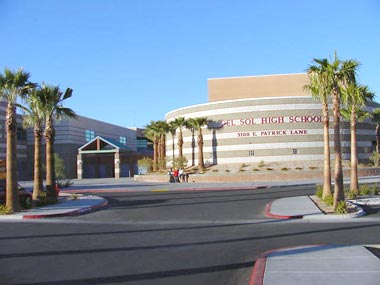Education palace
University of Arkansas education professor Dr. Jay P. Greene asks, in a recent blog post, "Why are schools so expensive?" That's a very good question to ask here in Nevada. Jay also made a great point on how it's not buildings that teach kids – a lesson our policymakers should learn, since a healthy chunk of Nevada's education spending is going toward building new schools.
Nevada ranks third in the nation in construction costs per student and second in the nation in interest payments on debt. In 1998, Clark County asked voters to approve a $3.5 billion bond package to construct 88 new schools. In 2008, the county asked for $7 billion (as part of a total $9.5 billion construction fund) to build 73 new schools over the next decade.
That amounts to more than $130 million per school (though the school district will probably use some of that money to refurbish older schools) – quite a hefty sum to add onto the largest education debt-to-expenditure ratio in the nation.
Just across the street from NPRI, Clark County built Del Sol High School for $39.5 million in 2004. That comes to a construction cost of about $145 per square foot and about 123 square feet per student. Does Nevada really need to continue constructing these palatial education factories?

Nevada needs to figure out how to save on construction costs, because raising taxes is not a responsible option. Walt Rulffes may think there is no other way to provide a learning experience for new students other than borrowing almost $10 billion, but the truth is, there are other options.
Nevada could make it easier to form charter schools, and to create and use school vouchers or tuition-tax scholarship programs. All of these options move financing for some new school construction to the private sector. Since the private sector would also take the risk of building the schools (and that cost has to be made up by attracting students), there is a strong incentive to keep construction costs low to save money and to build where demand is highest.
The money saved could be returned to the taxpayer or pumped back into the classroom, and that (along with other elements of serious education reform) would create a win-win situation for everyone.





